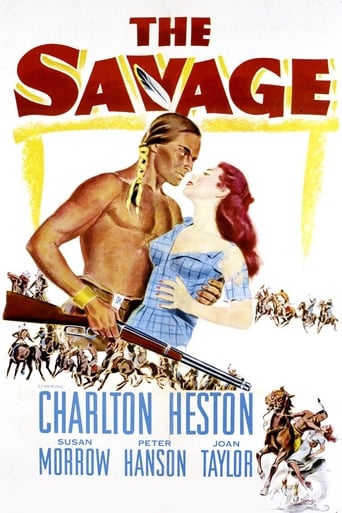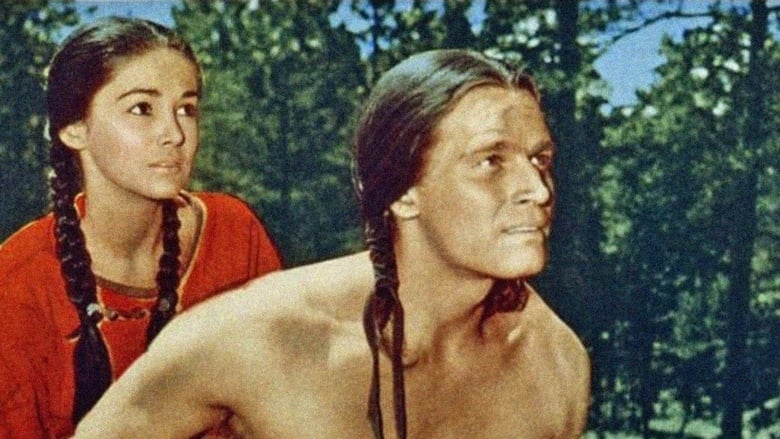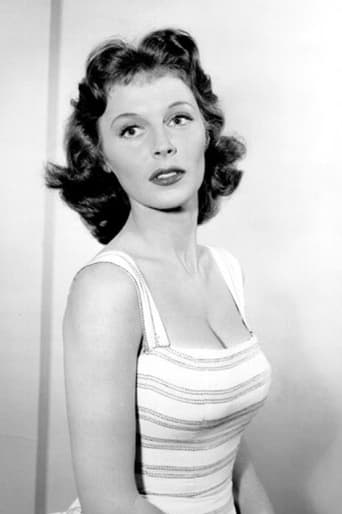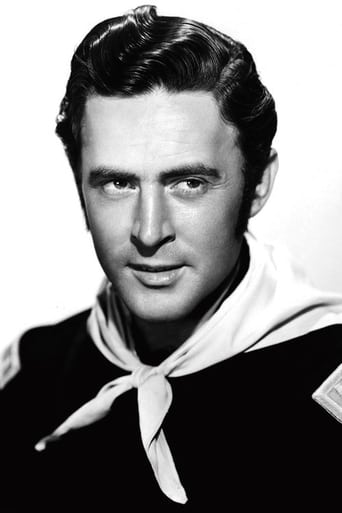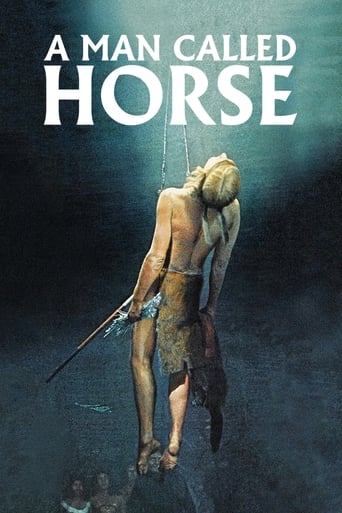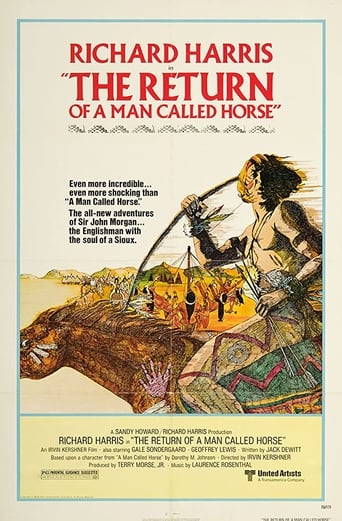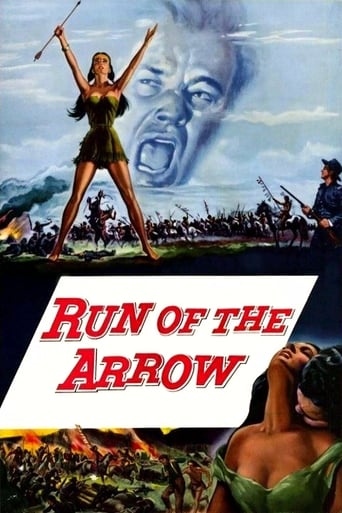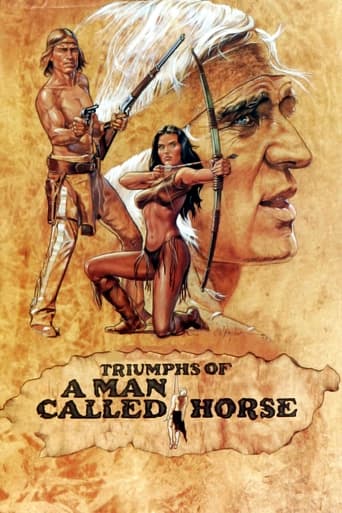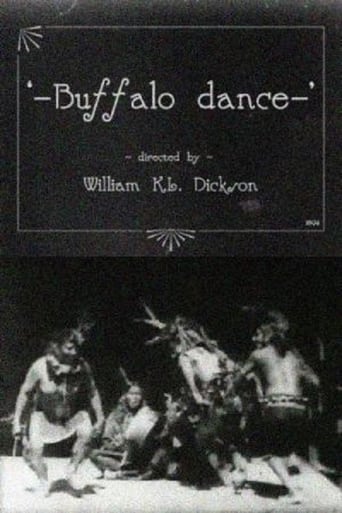The Savage (1952)
The only white survivor of a Crow Indian raid on a wagon train is a young boy. He is rescued by the Sioux, and the Sioux chief raises him as an Indian in very way. Years later, the white men and the Sioux threaten to go to war and the Indian-raised white man is torn between his racial loyalties and his adopted tribe.
Watch Trailer
Cast
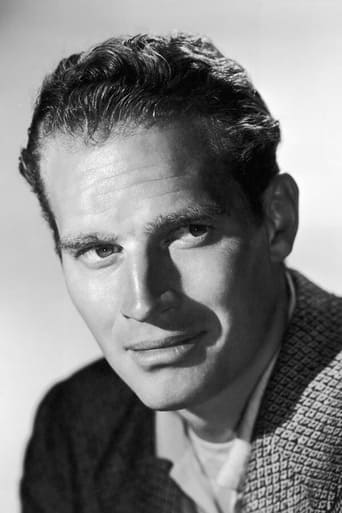


Similar titles
Reviews
"The Savage", an unforgettable western directed by George Marshall and starring Charlton Heston in the beginning of his film career, is a sensitive film, which was able to show the Indian in a humane and friendly way. We must consider that the film was when the Indians appeared only as hostile, dangerous and treacherous beings whose life was worthless. Not deserve any respect and kill them anything represented as punishment to whites. Some films have sought to show a more humanized Indians (the optimal "Devil's Doorway" directed by Anthony Mann, with Robert Taylor, and "Broken Arrow" directed by Delmer Daves, with James Stewart, and Jeff Chandler playing the role of Cochise). But "The Savage" is a powerful film pro-Indians, when we observe the course of the plot the immense love that united Jim Aherne, white adopted as an infant by the Indians, and their adoptive parents. It is wonderful to see the relationship between the three, valued for outstanding performance from Charlton Heston and also Ian MacDonald, a great role. The same Ian MacDonald almost simultaneously starred in High Noon, with Gary Cooper, playing the role of villain killer. And yet we can see the beautiful Joan Taylor in the role of Luta, of great expression. I consider "The Savage" a classic, a film of extreme sensitivity and very enjoyable to watch. It's one of my favorite westerns.
This is a very unusual sort of western and in some ways I commend it. On one hand, the film is very sensitive in its portrayal of the American Indians--much more so than the typical film of the day. They are NOT savages (despite the title) and have much to admire. Yet, on the other hand, most of the 'Indians' are actually just white actors in brown paint--an opportunity lost for real Indian actors.The film begins with a wagon train being attacked by the Crow tribe. All but one are killed--a young boy survives and is adopted by the Sioux. This boy grows into Charlton Heston--and it made sense to have a white actor playing this role. He is caught in the middle--as the Sioux are moving towards being pushed to fight against the white men to survive. But some of the Sioux are worried he has divided loyalties and favors the whites over his own people. So, Heston has to show his loyalty while at the same time taking a cautious approach--as he and his adopted father do not want a war if it can be avoided (which, as history has demonstrated, was not possible). And, if war comes, on which side will he fight?! In many ways, this film is reminiscent of later westerns like "Little Big Man" and "Dances With Wolves" because these films, too, are told from the natives' point of view. And, they all have a white guy in the lead who has been adopted by the tribe. If you think about it, this is a HUGE step from the typical westerns of the era where the Indians are all faceless savages and idiots. Yet, they also are a bit paternalistic because they MUST have a white guy in the lead. Wouldn't it be interesting if the leading man was an American Indian?! Overall, a better than average western that isn't perfect but it does have a unusual take on the typical cowboys versus Indians plot.
This colorful western adventure has a nice mixture of action and moral dilemma as hostilities break out between the cavalry and Indians. Charlton Heston, in one of his early roles, is obliged to walk a fine line between loyalty and treason, as an adopted son of a chief and as a cavalry scout. The picture was filmed in South Dakota's lush Black Hills, a country of great natural beauty. There are cavalry-Indian skirmishes and intrigue at the army post as Heston plays both ends against the middle. As both sides prepare for battle, the pressure mounts for Heston to be a hero or a renegade, and bring peace or destruction for his Sioux brethren. Peter Hansen, Richard Rober and Milburne Stone are among the good cast and Susan Morrow and Joan Taylor are the ladies who are smitten with Heston, one as a scout, the other as a Sioux warrior. Paul Sawtell contributes another fine score, a spare, melancholy accompaniment to a golden-age western.
Photographed in color in the Black Hills of South Dakota, George Marshall's "The Savage" is a sympathetic look at the Indian Sioux presenting them as people, recurring on love and loyalty based on mutual respectin this case, the bond between a Chief Indian and his adopted son...The film opens in 1868 on Sioux country, with a wagon trail attacked by the aggressive Crow Indians... All are massacred except Young Heston, eleven-years old... Sioux warriors arrive on the scene, in their eyes the young boy is a brave warrior, instantly adopted by Yellow Eaglechief of this Miniconju branch of the Sioux with the name of War Bonnet...Time goes by and the boy grows to manhood... War was about to break out between the Sioux nation and the white men... Heston has to decide soon on whose side will fight... Meanwhile, a pretty young squaw named Luta (Joan Taylor) has fallen in love with Heston who sees her only as his "little" sister... She reacts by calling him: "Man of stone, man who sees no woman, man of no love. Blind one!"The great moment of the film is the test of truth, before the assembled warriors in the great council meeting, questioning on Heston's divided loyalty... Yellow Eagle's only request: "My son. I ask only one thing. Do not bring disgrace to my name."Charlton Heston early efforts as an actor are exciting:Heston, the best warrior: galloping at full tilt to catch a wild white stallion..Heston's wisdom at the Indian meeting: "Is it the pigment of a man's skin which makes him a Miniconju, a member of the mighty Sioux? Is it the color of his eyes? No, neither of these things. It is the beating inside his body."Heston's anger: "From this day forth, let no man call me white!"Heston's delicate hint if he allows the ambush to go through, innocent men, women, and children will be killed: "My heart no longer quickly grows hot with anger, but all whites are not killers."Heston, a peacemaker: "I do not ask for sympathy. I am here to stop you from destroying yourselves."Heston's warn: "More soldiers will come... More guns as many as there are stars in heaven. For every soldier you kill, ten will come."With violent action scenes and great beautiful sceneries (mountains, lakes, woods, grasslands) "The Savage" is a fair Western, solemn, humane, rather tedious...Strangely enough, one year later, Heston is cast in an excellent Western "Arrowhead," as a chief of scouts for U.S. armed forces fighting Apaches...

